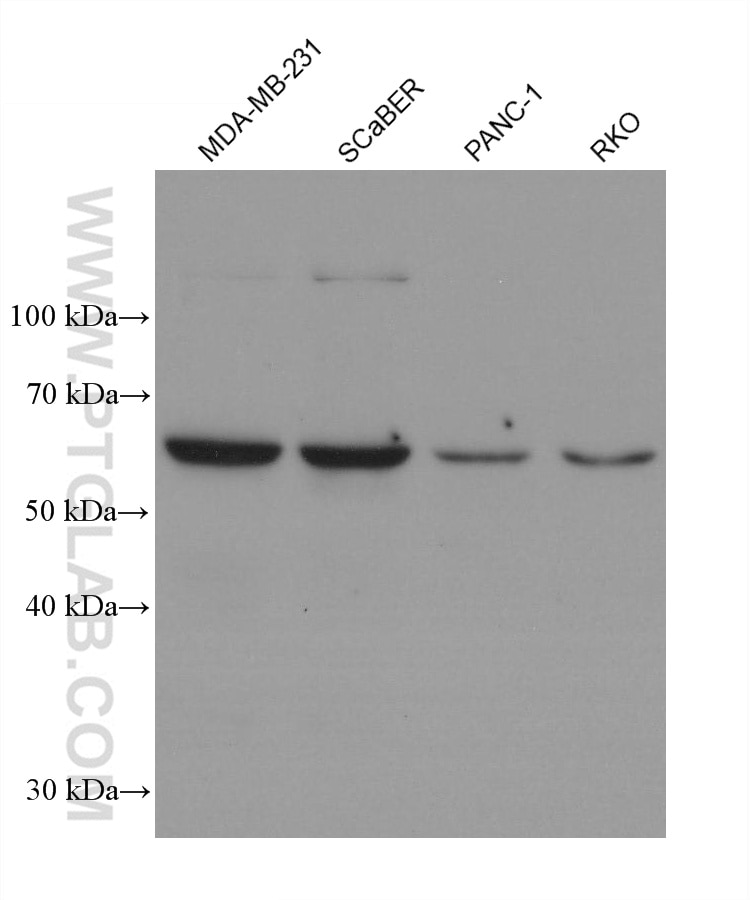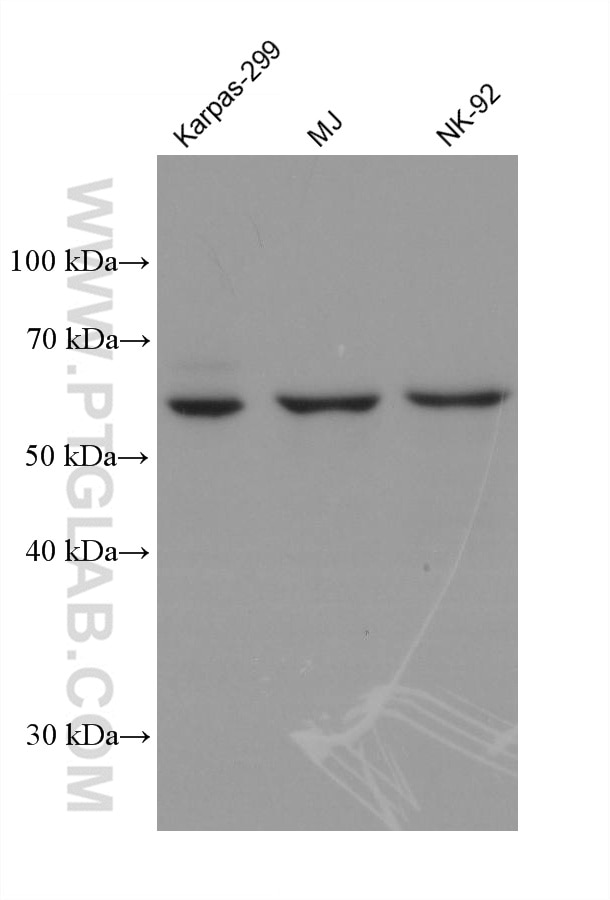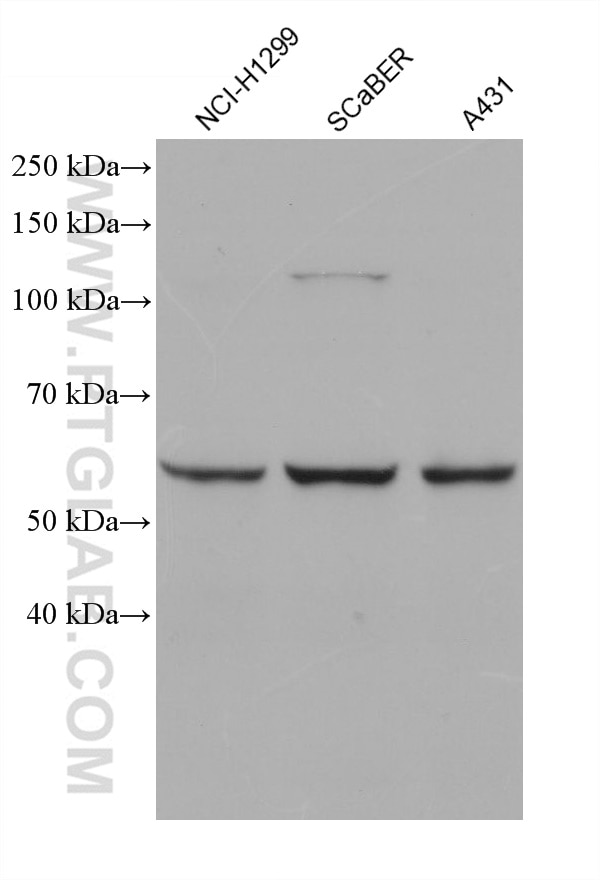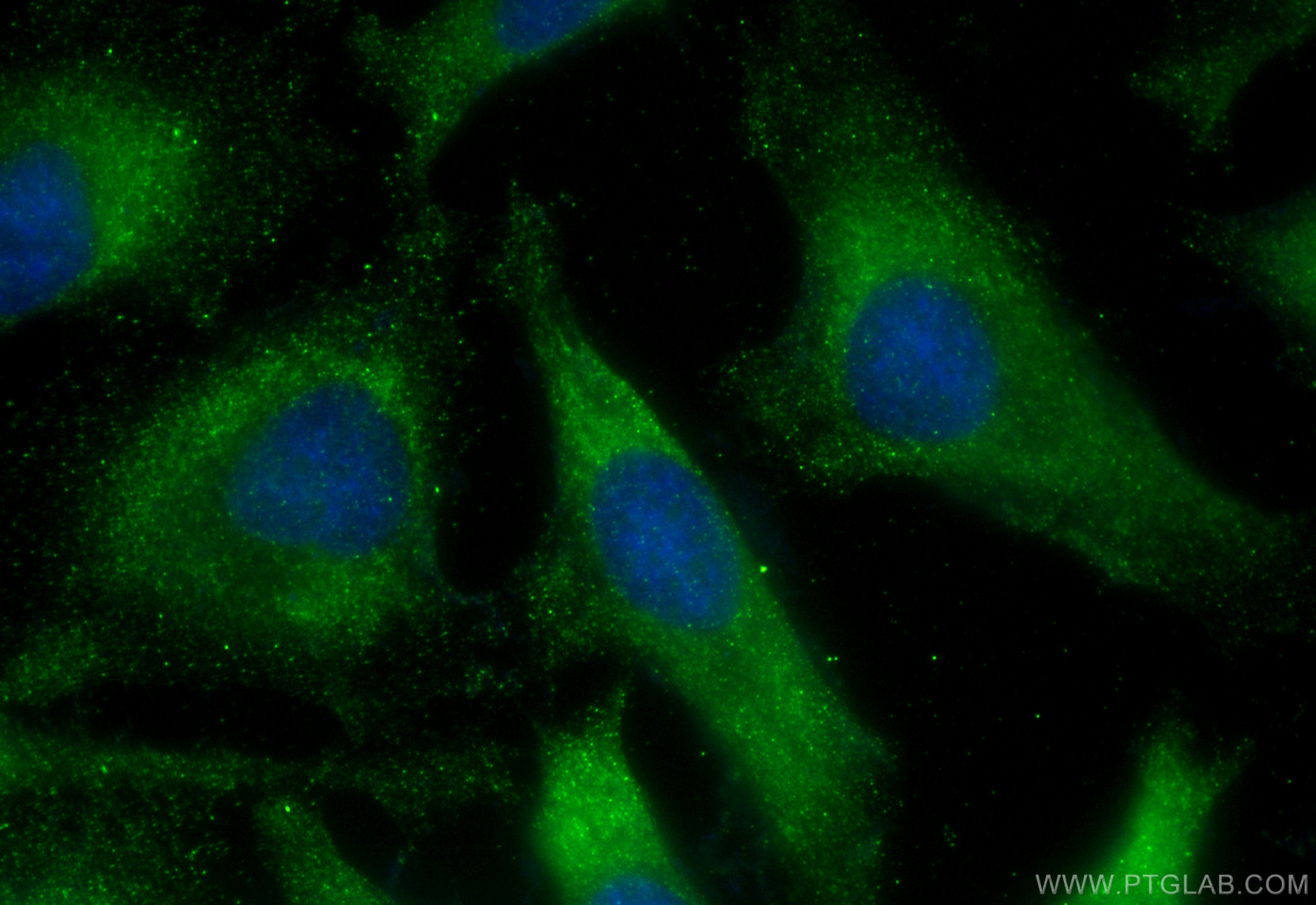Validation Data Gallery
Tested Applications
| Positive WB detected in | Karpas-299 cells, MDA-MB-231 cells, NCI-H1299 cells, SCaBER cells, A431 cells |
| Positive IF/ICC detected in | HeLa cells |
Recommended dilution
| Application | Dilution |
|---|---|
| Western Blot (WB) | WB : 1:2000-1:10000 |
| Immunofluorescence (IF)/ICC | IF/ICC : 1:400-1:1600 |
| It is recommended that this reagent should be titrated in each testing system to obtain optimal results. | |
| Sample-dependent, Check data in validation data gallery. | |
Published Applications
| WB | See 2 publications below |
Product Information
68640-1-Ig targets cGAS in WB, IF/ICC, ELISA applications and shows reactivity with human samples.
| Tested Reactivity | human |
| Cited Reactivity | mouse |
| Host / Isotype | Mouse / IgG1 |
| Class | Monoclonal |
| Type | Antibody |
| Immunogen | cGAS fusion protein Ag30074 相同性解析による交差性が予測される生物種 |
| Full Name | chromosome 6 open reading frame 150 |
| Calculated molecular weight | 496 aa, 54 kDa |
| Observed molecular weight | 60 kDa |
| GenBank accession number | BC113608 |
| Gene Symbol | cGAS |
| Gene ID (NCBI) | 115004 |
| RRID | AB_3085328 |
| Conjugate | Unconjugated |
| Form | Liquid |
| Purification Method | Protein G purification |
| UNIPROT ID | Q8N884 |
| Storage Buffer | PBS with 0.02% sodium azide and 50% glycerol{{ptg:BufferTemp}}7.3 |
| Storage Conditions | Store at -20°C. Stable for one year after shipment. Aliquoting is unnecessary for -20oC storage. |
Background Information
cGAS (Cyclic GMP-AMP synthase), also known as C6orf150 or h-cGAS, is a 522 aa protein. cGAS mediates innate immune responses against invading pathogens, or against self-dsDNA, which causes autoimmune disorders. The cGAS sensor not only recognizes cytosolic dsDNA but also synthesizes the second messenger cGAMP from ATP and GTP, which then binds to and activates STING. STING undergoes conformational changes and translocation from the endoplasmic reticulum to the Golgi apparatus to encounter TBK1 and IRF3, eventually triggering the production of type I IFNs.
Protocols
| Product Specific Protocols | |
|---|---|
| WB protocol for cGAS antibody 68640-1-Ig | Download protocol |
| IF protocol for cGAS antibody 68640-1-Ig | Download protocol |
| Standard Protocols | |
|---|---|
| Click here to view our Standard Protocols |
Publications
| Species | Application | Title |
|---|---|---|
Environ Pollut Disturbance of Mitochondrial Dynamics Led to Spermatogenesis Disorder in Mice Exposed to Polystyrene Micro- and Nanoplastics | ||
J Inflamm Res Study on the Mechanism of Artesunate in Modulating AR Epithelial Injury and Th2-Type Inflammatory Status |



